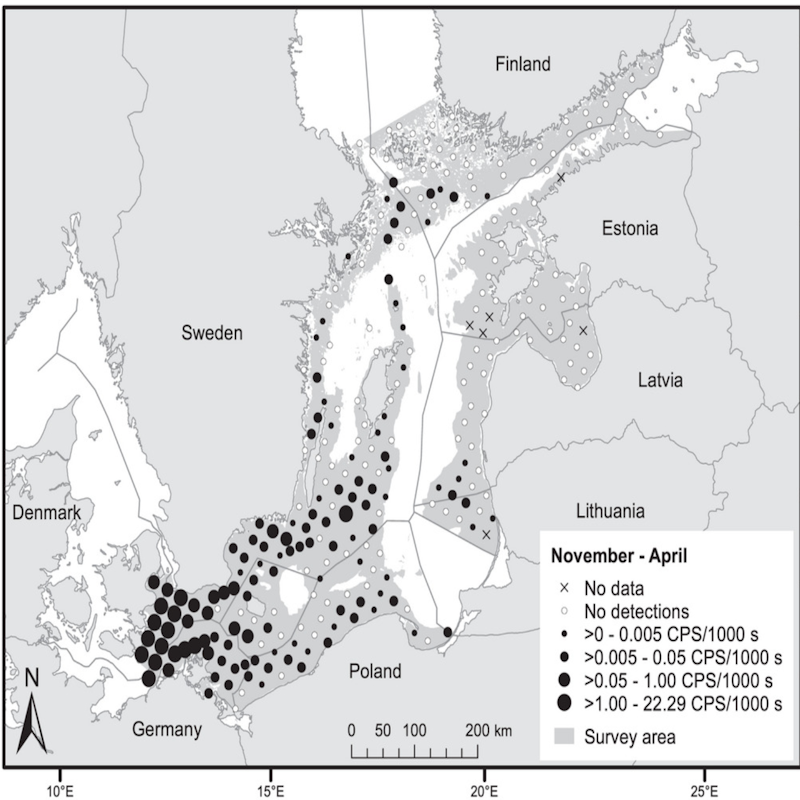
Getting started with project planning
It can save time to get in touch during the early stages of project planning, so we welcome questions and are always happy to help where possible. There are notes on the FAQs page as well as some project details within Case studies.
These are key planning questions:
- Define the question you are trying to answer.
- Assess the number of detections you will need to do that and any evidence you can find of likely detection rates in order to arrive at an estimate of the minimum number of loggers required.
- Consider what spatial sampling regime is required and is feasible, and whether any pre-project trials are needed.
- Design moorings and assess the risk of losing instruments (see .
- Project timing considerations. For example, for a BACI approach ( Before-after-control-impact) if PODs are deployed two or more years prior to the commencement of a project, the data collection will allow a much more powerful method for assessing the impact. This can help to avoid incorrectly attributing natural, but infrequent, changes in patterns of cetacean habitat use, to effects caused by construction or other sources of disturbance.
- Assess the time required to obtain instruments, moorings, boat time and permissions.
- Assess the data handling time including learning the software and process.
- Plan the training of deck crews.
The success of any acoustic project requires handling a lot of data, and designating a data manager who understands the role is a key step.
How many PODs?
Assessing the response of cetaceans to a fishery pinger: use a cycling pinger to provide ON/OFF periods for comparison and monitor the effect with two or more PODs in a line from the pinger. The pinger will be recorded by the closest POD(s) so that ON/OFF periods are available to apply to the remainder.
Comparison of sites regarding cetacean use: Highly seasonal patterns of use are commonly seen, so a 1 year study is a minimum time period with one or two PODs per site. The differences to be detected are likely to be very large, so less data (fewer PODs) are required than in trend/population studies (see below).
Trends in density of animals/population: These require the largest numbers of loggers because the difference to be measured is very small. The number of loggers will be determined by the level of precision required, the likely detection rate, and the heterogeneity of the habitat – if that is high, a greater variance between detection rates at monitoring sites is likely to make confidence intervals wider.